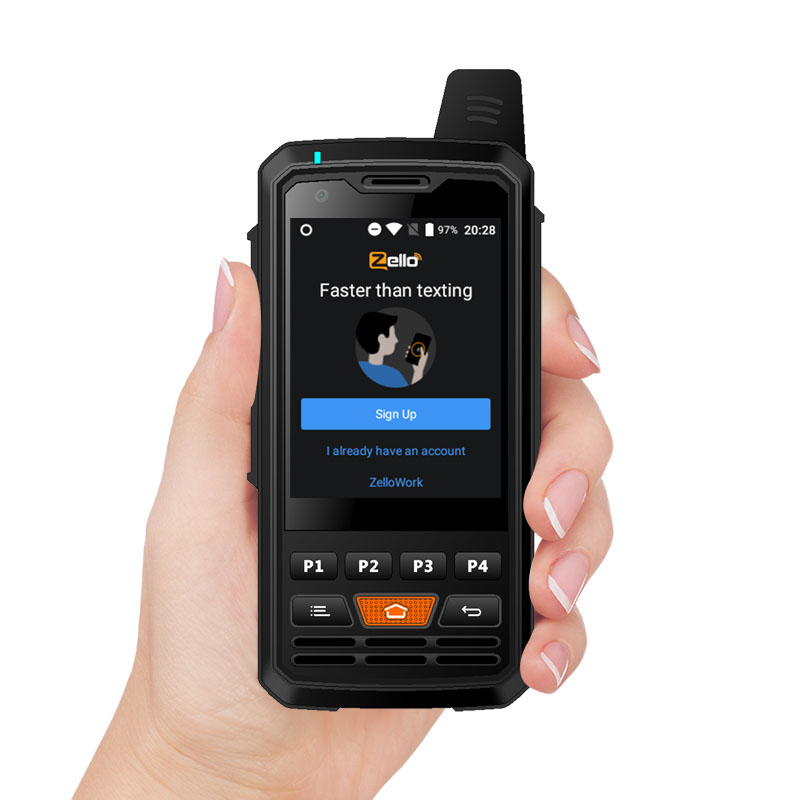Recent Blog
-
UNIWA will bring new models of handheld smart terminals to MWC Barcelona 2025. Our booth number is 7F21. Welcome to visit us!
2025-01-18 -
Welcome to visit our booth 5H26.From October 18th~21st 2023,UNIWA will participate in the Hong Kong Global Sources Electronics Fair
2023-09-19 -
Welcome to visit our booth 5J29. From April 18th~21st 2023, UNIWA will participate in the Hong Kong Global Sources Electronics Fair
2023-04-03 -
The Top 6 Android Barcode Scanners in 2023
2023-02-24
Common Walkie Talkie Terms You Should Know(Part Two)
Last time, we have learned some terms of walkie talkie (You can check it by clicking the following the link Common Walkie Talkie Terms You Should Know(Part One). Would you like to learn more? Today, we'll present you another patch of walkie talkie terms so that it will be easier when you need to use these function on the walkie talkie. OK, let's begin.

Monitor
Usually, the Monitor is a mode to help you receive the weak signal. By pressing the dedicated key to forcibly connect the receiving signal channel, the operator uses ears to distinguish the faint sound in the speaker to achieve the purpose of listening.
When you press the monitor button, it means you disabled the CTCSS/DCS codes. No matter set the codes or not, you can receive from other radios with the same frequencies.
CTCSS/DCS mode
In telecommunications, CTCSS and DCS are systems used to reduce the annoyance of listening to other users on a shared two-way radio communications channel.
CTCSS is Continuous Tone Coded Squelch System. It does this by adding a low frequency audio tone to the voice. Where more than one group of users is on the same radio frequency, CTCSS circuitry mutes those users who are using a different CTCSS tone or no CTCSS. In other word, as long as the transmission have a different CTCSS, or no CTCSS, then your radio will not pass any audio to the speaker.
CTCSS is an analog system. A later Digital-Coded Squelch (DCS) system was developed by Motorola under the trademarked name Digital Private Line (DPL). General Electric responded with the same system under the name of Digital Channel Guard (DCG). The generic name is CDCSS (Continuous Digital-Coded Squelch System).
CTCSS and CDS are also referred to by other names, including CDCSS, PL and DPL, but the official terms are CTCSS and DCS. They both have the same function and work in similar ways.
Scan
In order to hear the conversation of all channels, a listening method is adopted.
By pressing the dedicated key, the receiving circuit receives the channel one by one in a certain order for a period of time to listen to the signal in the channel. If the receiving time of each channel is 100ms, ten channels can be scanned per second, that is, the scanning speed is 10ch/s.
Priority Channel Scan
Priority Channel Scan allows users to prioritize certain channels over others during the scanning operation. This enables a more frequent checking of the preferred channels to other channels and reduces the likelihood of missing important messages or conversations over the preferred channels.
Delete/Add Scan Channel
To add or remove channels from the scan list.

TOT: Time Out Timer
This feature will stop the transmission of the two-way radio if the radio is transmitting for a long duration. In some models, if the Push-To-Talk button is pressed for 60 continuous seconds, the radio device emits a warning tone and stops transmitting.
Some radios may also have a Penalty Timer which starts after the Time-Out Timer is over. The Penalty Timer keeps the unit from transmitting for an additional length of time.
Battery Save
The battery saver feature of the two-way radio, also called low power mode or the sleep mode. It helps in extending the life of the batteries in use. During usage, if the user has left the radio unused for a certain period of time, the feature switches the device to low-power mode to conserve power. The radio automatically switches to battery saver mode if there are no transmissions from it for more than 10 seconds. This time is adjustable in certain models of the two-way radio. This mode lets the clock run with the display turned off to save the battery of the radio.
Busy Channel Lockout
The Busy Channel Lockout prevents transmission on a frequency which is, or appears to be, already in use.
Normally, you'd be able to hear the other side which is transmitting using your receiver, and avoid transmitting until the channel is free.
Squelch Level
The noise intensity in the received signal is inversely proportional to the signal. The higher the signal, the weaker the noise; the weaker the signal, the stronger the noise.
In the mid-nineties of last century, before the radio mute adjustment is from the largest to the smallest stepless adjustment. From the mid-nineties since the mid-1990s in the radio design will be the maximum noise and minimum noise is divided into several files, each file is called a level, with the number to represent, called the squelch level, also known as squelch level.
he higher the number here, the higher the level, the higher the level, the stronger the ability to suppress the noise, the noise or other irrelevant signal interference is also less, the less the noise, but also less likely to receive Need to receive useful weak signal.
Talk Around
It is a repeater Talk around function, usually you will see T/A, it is the short of it. It means “talking around the repeater”.
So, Talk-a-Round is where the mobile or portable talks simplex to others on the output frequency of the repeater they normally use. It is primarily used when a repeater is out of service, or you are out of range of it.
Conclusion
So these are the terms about walkie talkie today, including Monitor, Scan, Priority Channel Scan, Delete/Add Scan Channel, Time-out Timer, Battery Save, Busy Channel Lockout, Squelch Level and Talk Around. We believe you have figured out what they are. We will keep on updating this subject. If you are interested, please keep following us. Or if you have any questions about our products or cooperation intention, please feel free to contact us.
Describe Your Needs In Detail!
We will carefully evaluate your needs and give professional solutions.
